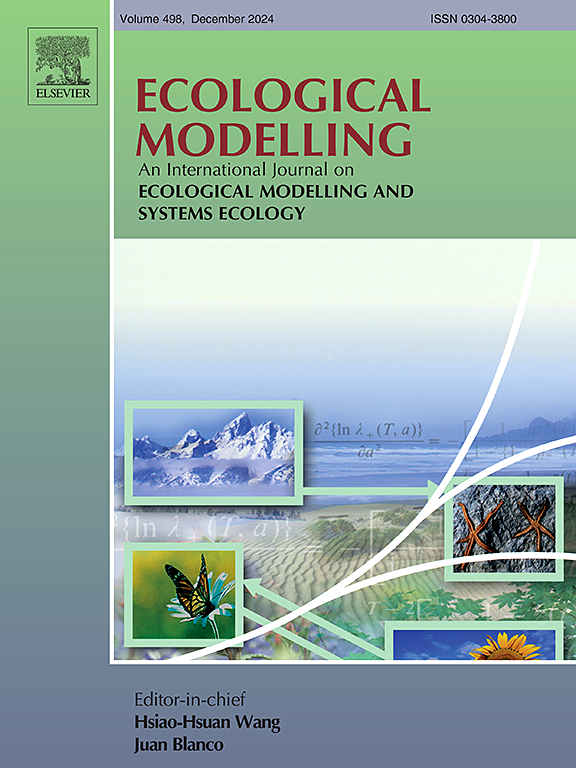Fungal pathogen transmission dynamics in North American salamanders: Mathematical insights for disease management
IF 2.6
3区 环境科学与生态学
Q2 ECOLOGY
引用次数: 0
Abstract
The transmission dynamics of infectious diseases in amphibians, particularly those with multiple transmission routes, are complex and can rapidly evolve into epizootics. Here, we consider the eastern newt (Notophthalmus viridescens) and the emerging fungal pathogen Batrachochytrium salamandrivorans (Bsal) as a host for amphibians and a pathogen for infectious diseases, respectively. The susceptible population can become infected by Bsal in two ways: direct contact with infected newts or by environmental zoospores. To properly depict the impact of Bsal on amphibians, we categorized the host newt population into distinct life stages: larvae, eft, and adult. Each life stage represents unique traits and habitat preferences. Considering these, we employed an interdisciplinary approach by combining mathematical modeling and laboratory experiments to explore the deterministic transmission dynamics of Bsal in amphibians. We developed a compartmental model employing a system of ordinary differential equations comprising life cycle and disease dynamics.
In lab experiments, we varied temperature, initial population density, and life stages to measure the key parameters such as the contact rates among newts in aquatic and terrestrial environments, the probability of transmission upon host contact, zoospore shedding rate, zoospore degradation rate, disease-induced death rate, and incubation period. Our analysis revealed that environmental conditions, particularly temperature and density of newts, play a crucial role in influencing model parameters and disease dynamics. In all cases, adult eastern newt populations in aquatic environment approached extinction in 6 months, while eft populations in the terrestrial environment persisted. Declines were most rapid and extreme at 14 C compared to 6 C. Sensitivity analyses revealed that reducing host density, increasing zoospore degradation, and strategies that increase host immune defense will reduce Bsal invasion potential. Our results highlight the threat of Bsal to North American salamander species; however, shed new light on possible mitigation strategies if it is introduced.
求助全文
约1分钟内获得全文
求助全文
来源期刊

Ecological Modelling
环境科学-生态学
CiteScore
5.60
自引率
6.50%
发文量
259
审稿时长
69 days
期刊介绍:
The journal is concerned with the use of mathematical models and systems analysis for the description of ecological processes and for the sustainable management of resources. Human activity and well-being are dependent on and integrated with the functioning of ecosystems and the services they provide. We aim to understand these basic ecosystem functions using mathematical and conceptual modelling, systems analysis, thermodynamics, computer simulations, and ecological theory. This leads to a preference for process-based models embedded in theory with explicit causative agents as opposed to strictly statistical or correlative descriptions. These modelling methods can be applied to a wide spectrum of issues ranging from basic ecology to human ecology to socio-ecological systems. The journal welcomes research articles, short communications, review articles, letters to the editor, book reviews, and other communications. The journal also supports the activities of the [International Society of Ecological Modelling (ISEM)](http://www.isemna.org/).
 求助内容:
求助内容: 应助结果提醒方式:
应助结果提醒方式:


